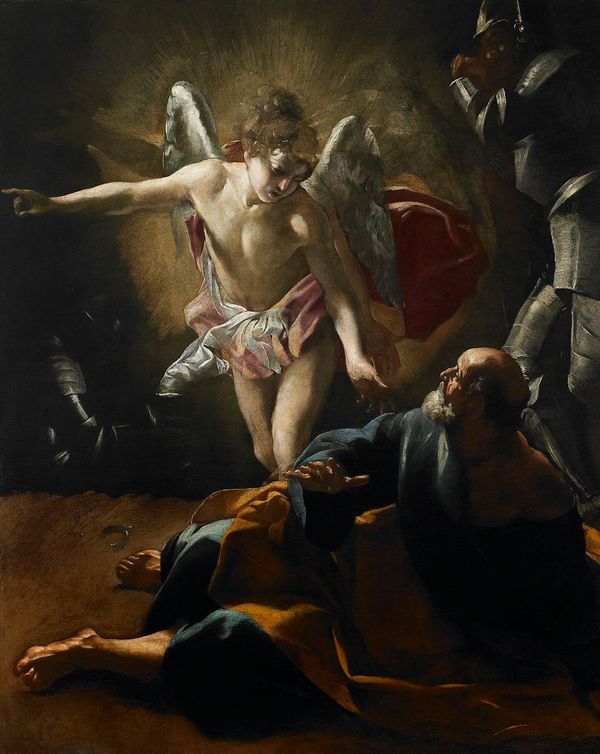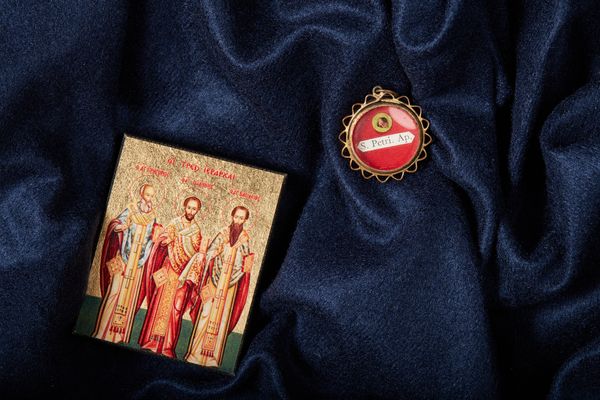Are you a leader or a follower? When Jesus met Simon, he recognized his leadership qualities. But he knew that Simon would need help. Jesus began by giving Simon a new name. He called him Peter, which means “rock.” Later, Jesus told Peter that he was to be the rock on which Jesus would build his Church.
Peter was the first Apostle to recognize that Jesus was the Messiah, the one promised by God to save his people. He gave up his life as a fisherman to lead others to Jesus, by being a fisher of men (Matthew 4:19) for Christ. He was a witness to the Transfiguration, when Jesus was revealed to be God’s Son. He saw Jesus bring a dead child to life (Luke 8:40-56), and he was an eyewitness to Jesus’ agony in the garden of Gethsemane.
After he rose from the dead, Jesus appeared to his disciples and asked Peter, “Do you love me?” When Peter said that he did love Jesus, the Lord commanded him, “Feed my lambs…Tend my sheep” (John 21:16). Jesus was giving Peter the responsibility for caring for the Church and all its members.
Although he had many strengths, Peter had weaknesses, too. He complained that he and the other Apostles had given up everything to follow Jesus and wanted to know what he would get for this sacrifice (Matthew 16:27). At the Lord’s command, he walked on water, but then lost his faith in Jesus’ power and sank in the sea (Matthew 14:31).
At the Last Supper, Jesus told Peter that the time would come when Peter would deny knowing him. Peter angrily said it would never happen. Later that evening, Peter did deny three times that he knew the Lord or that he was one of his followers. When Peter recognized that the Lord’s prediction had come true, he was overcome with sadness and tears.
After the coming of the Holy Spirit on the first Pentecost, Peter was filled with all the gifts he needed to lead the young Church. That Pentecost morning, he gave such a powerful speech about Jesus to the crowd in Jerusalem that three thousand people asked to be baptized immediately. Peter was the first Apostle to perform a miracle in Christ’s name. Working with St. Paul, he recognized that the Church needed to be open to all people. Peter was also the first bishop of Rome, a title that has been given to every pope. Peter made Rome the home of the worldwide Church.
Together, Saint Peter and Saint Paul, our greatest missionary, were so important to the growth of our Church that we honor them with a joint feast day on June 29th. They both died as martyrs for their belief in Christ.
The Church has another celebration each year to honor these spiritual brothers. It is called the Dedication of the Basilicas of the Apostles Peter and Paul in Rome. A basilica is a great church dedicated to the memory of an important person or event. Tradition tells us that the basilicas honoring Saint Peter and Saint Paul were originally built over the places where they were martyred by order of the Roman Emperor Nero around the year 64. This double feast is celebrated on November 18.
In Saint Peter’s Basilica there is an ancient chair that has been carefully protected for over 2000 years. People believe that it belonged to St. Peter. It is a tradition for every pope and bishop since Peter to have a special chair in their cathedral church. From this chair, the bishop preaches and leads his people in celebrations. Each year, the Church honors this tradition by celebrating the feast of the Chair of Saint Peter on February 22. It is a sign of our unity as Catholics. Together, we gather around our pope as pastor of the entire Church.
Saint Peter’s great love for Jesus made it possible for him to do everything that Jesus asked. The Lord asks the same of each of us. Like Peter, we can use our strengths to continue his work of bringing love and peace to others. We can pray that Jesus will help us to overcome our weaknesses so that we can serve him every day. Jesus can and will work through us, as he did with Simon Peter, the Rock of the Church.
Credits:
Discriptions of saints lives and biographies have been excerpted, summarized, or compiled from
Franciscan Media,
CatholicSaints.Info,
Catholic Online, and
Wikipedia.

